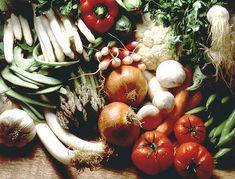
Vegetable prices are finally showing an inflationary trend due to a variety of market factors, but the effects are not filtering back down the supply chain. Some growers are switching out of traditional crops as a result.
According to figures just released by the Office of National Statistics, standard loose potato, tomato, onion, carrot and iceberg prices are between 17 and 39 per cent higher than a year ago, depending on individual product lines.
National and consumer media reported this as indicative of traditional veg pricing itself off the nation’s plates as climate change takes hold. And last week’s Commercial Grower revealed Kent’s largest winter cauliflower grower, Robert Montgomery, on the Isle of Thanet, is switching into glasshouse crops because the brassica crop is no longer viable.
However, the situation is more complex, said Martin Evans, chairman of the British Carrot Growers’ Association. “The highlights on retail prices look good. But if you look at the economics it is very concerning. We are all exposed to increasing operational costs and the underlying trend of changing environmental conditions is making carrot production risky.”
Evans believes that most retail customers are sympathetic to UK growers, but they too face increasing labour and energy costs. “Food has been in a deflationary cycle for years, but I believe that this season shows that is coming to an end,” said Evans. “The hike in carrot prices by 27 per cent is probably only bringing them up to levels of 15 years ago.”
Most price increases have affected root, tuber and allium crops, whereas brassicas have not felt the same uplift. “I don’t see that prices have moved up,” said one cauliflower marketer. “If anything there is huge price deflation. If you lump all vegetables in together then it will show that prices are above average, but for some of the green veg, there has been massive price deflation.”
The consensus along the chain is that prices need to rise, even if it is just by a few pence a head or a kilo, to ensure long-term viability for many. “If you think of us like a toothpaste tube, the efficiencies have been squeezed as far as they can be,” said one grower. “We are flat with the end rolled up. The next step is throwing us in the bin.”
Growers are pointing out that finding the funding for PR activity from such a tight margin is too hard.
The National Farmers’ Union is trying to do its bit, as is the Horticultural Development Council through its ‘Eat with the Seasons’ initiative. But price pressure is an ongoing concern for all growers, according to Kelly Watson, horticulture adviser at the NFU. “Because the retail market is so competitive, prices are squeezed down, but we are continuing to fight growers’ corner on prices and trying to get prices back up,” she said.
Watson dismisses claims made in the national papers that traditional UK-grown vegetable crops are disappearing. “There is still plenty of land to grow biofuel and food crops in the UK, and although the supermarkets put pressure on growers, there is a positive reaction from them when it comes to buying British and trying to maintain the UK grower base,” she said.



